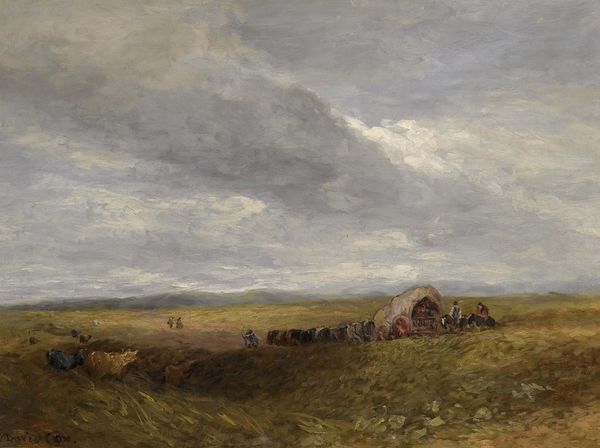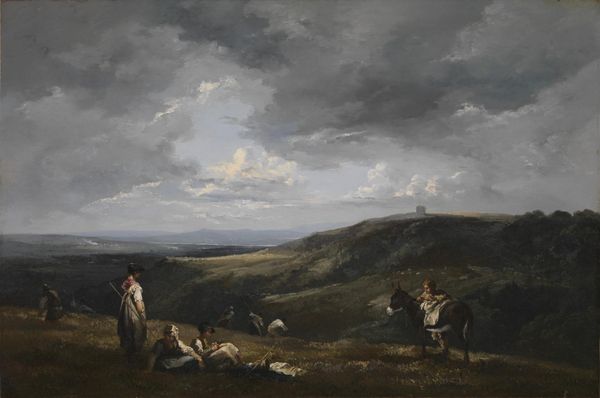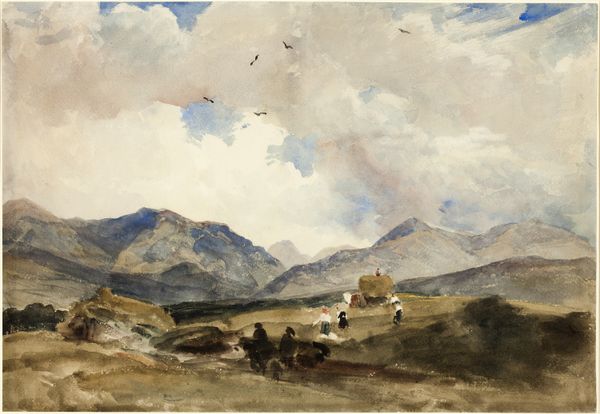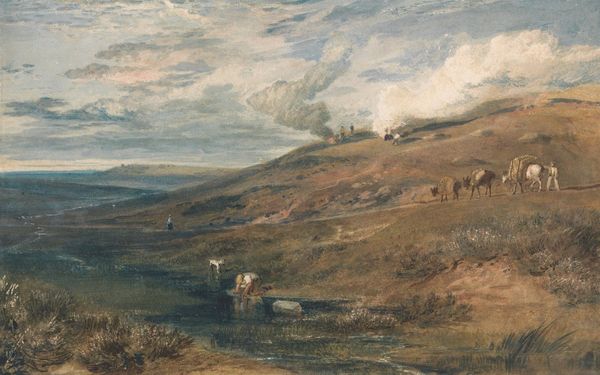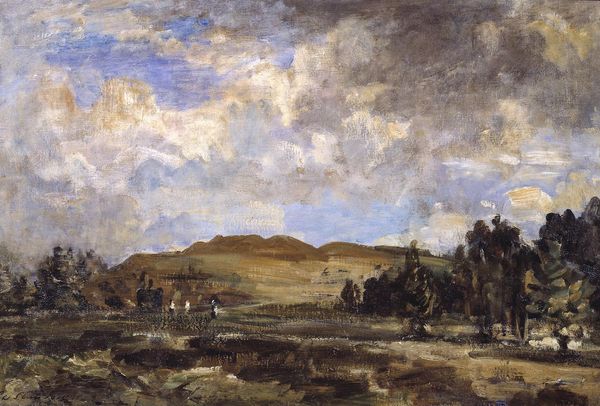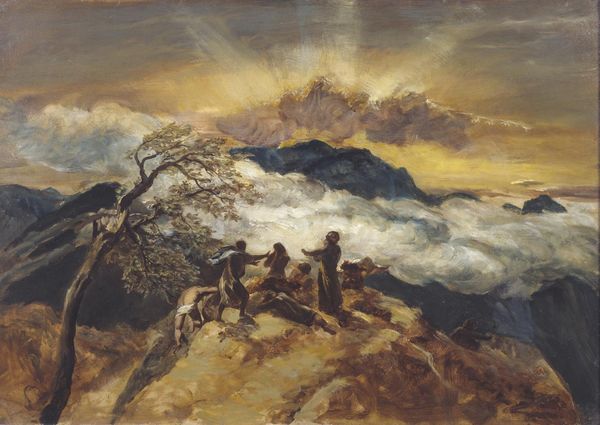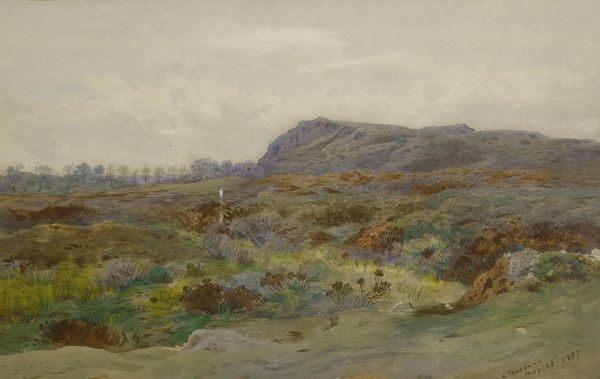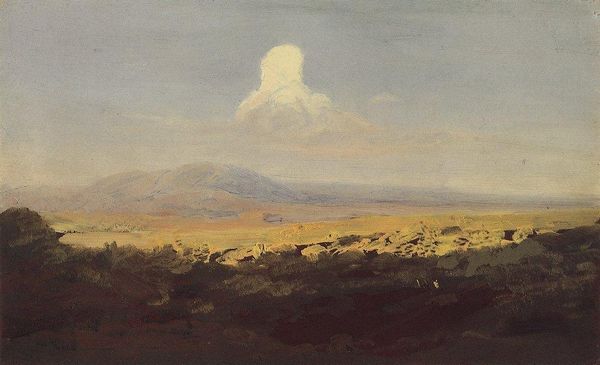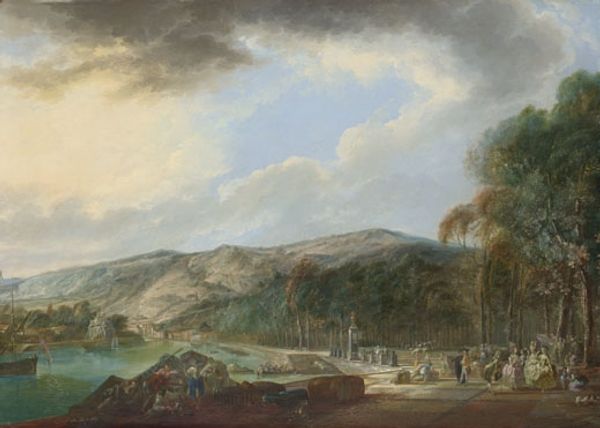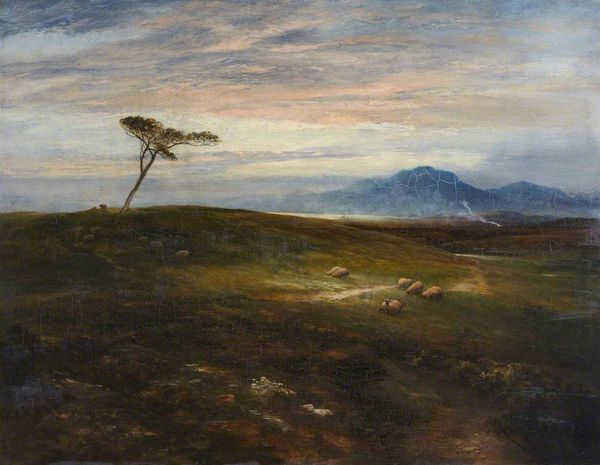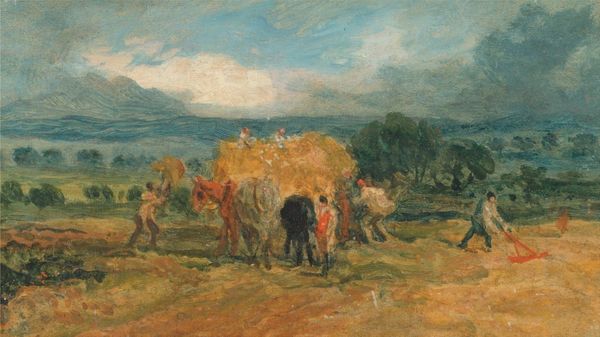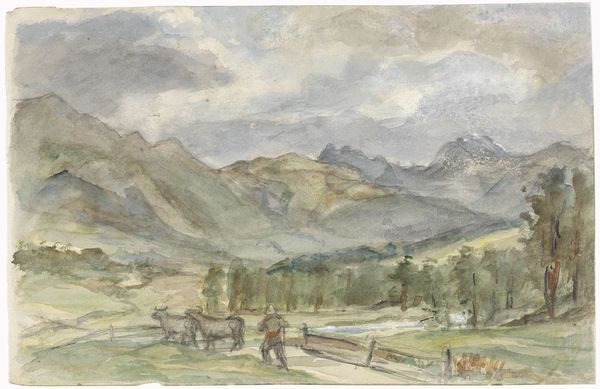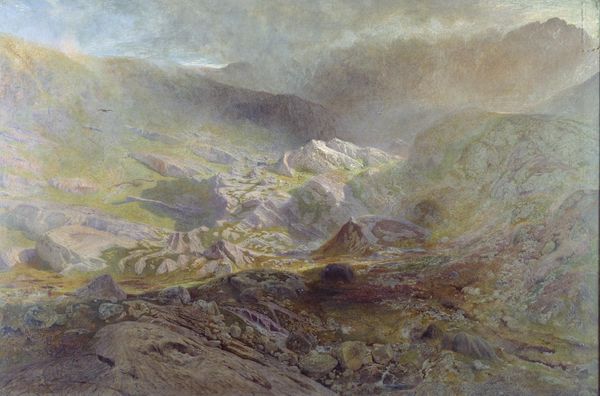
Copyright: Public domain
Curator: Before us we have Nathaniel Hone the Younger’s, HERDSMAN AND COWS ON A COUNTRY ROAD, GLENMALURE, COUNTY WICKLOW, painted circa 1880. Editor: It feels brooding. That subdued palette—grey skies looming over muted browns and greens—creates an atmosphere of quiet tension. Curator: Precisely, and the figures serve a traditional, almost archetypal function within that landscape. The herdsman, dwarfed by the mountain behind him, leading his cows down the path... It speaks to a deep sense of connection to the land, an adherence to cyclical routines. Editor: That relationship with land is key, particularly given the historical context. Consider this painting made in 1880: Land ownership and agricultural labor were intensely fraught issues in Ireland during this period. Does Hone's idealized depiction ignore that simmering tension? Curator: Perhaps. Or, it could be argued that the image idealizes an older system, a connection to the land predating more commercial, later models of farming. I'm particularly struck by how Hone uses those subtle gradations of light, almost dissolving the forms into atmosphere. It's less about individual cows, and more about their place within this grand, almost sublime landscape. Notice also the cows looking in different directions which could imply an awareness of imminent threat, especially during those years. Editor: I see your point about light and atmosphere, yet it raises questions about whose story gets told, and from what perspective. The peasant classes' concerns aren’t prioritised in paintings from this time, for very clear reasons, because landowners tend to be the patrons, no? Curator: A valid point! But I would argue that the painting attempts to grapple with something universal. Think of the symbolic weight of cows throughout history and across cultures, from ancient Egypt to Celtic traditions—as providers of sustenance and prosperity. Here they anchor us to notions of continuity, linking the past to the present. Editor: Fair enough, and certainly that’s a more generous interpretation. Maybe the quietness of this landscape is not just aesthetic, but also reflects a deliberate choice to not amplify existing societal disquiets. Curator: Ultimately, a work that remains resonant today, especially considering the ongoing need to reassess our relationship to the natural world. Editor: Indeed, and consider the ethics of how our food reaches our table, too, in the present.
Comments
No comments
Be the first to comment and join the conversation on the ultimate creative platform.
